Simple Steps That Work!

If you’ve spent time nurturing your squash plants only to notice tiny striped or spotted beetles chewing through the leaves, flowers, and fruit, you’re not alone. Cucumber beetles are a gardener’s nightmare. They don’t just munch on your plants—they also spread deadly diseases like bacterial wilt and squash mosaic virus. The good news? With the right steps, you can protect your garden and keep your squash plants thriving.
In this guide, you’ll learn how to identify cucumber beetle damage, discover natural and chemical control options, and find out what prevention tactics work best. By the end, you’ll feel confident in saving your squash plants from these persistent pests.
Why Cucumber Beetles Are a Big Problem
Cucumber beetles may appear tiny, but they can deliver a powerful pinch, causing huge damage to squash. They come in two main types: striped cucumber beetles and spotted cucumber beetles. Both species are dangerous because:
-
They chew on leaves, stems, and blossoms.
-
They transmit plant diseases like bacterial wilt.
-
They weaken young squash seedlings.
-
They lay eggs in the soil, creating larvae that eat plant roots.
Left untreated, cucumber beetles can wipe out an entire squash crop. That’s why early detection and quick action are so important.
How To Identify Cucumber Beetle Damage

Not sure if cucumber beetles are the culprits? Look for these telltale signs:
-
Tiny holes in leaves – The damage looks like small, round bites.
-
Yellowing or wilting plants – Often caused by bacterial wilt spread by beetles.
-
Damaged flowers – Blossoms may fall off early, reducing fruit production.
-
Scarring on squash fruit – Feeding can leave unsightly marks on young squash.
-
Beetles themselves – They’re about ¼ inch long with black stripes or spots.
If you see these symptoms and spot beetles crawling around your plants, it’s time to act.
Step 1: Handpick Beetles Early
One of the simplest control methods is also the most direct—handpicking.
-
Visit your squash plants in the early morning when beetles are sluggish.
-
Use your fingers or a small hand vacuum to remove them.
-
Drop the beetles into a container of soapy water to kill them.
While it may seem tedious, this works well for small gardens and can keep infestations under control.
Step 2: Use Floating Row Covers
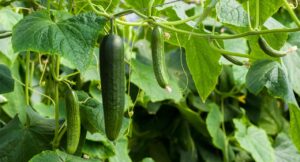
Row covers are lightweight fabrics that act like a shield between your squash plants and pests.
-
Place covers over young squash plants immediately after planting.
-
Anchor the edges with soil, rocks, or pins.
-
Remove the covers once flowers appear so pollinators can reach the blooms.
This method prevents cucumber beetles from landing on your plants during the most vulnerable stages.
Step 3: Try Natural Predators
Nature often provides its own pest control. Introducing or encouraging beneficial insects can help reduce cucumber beetle populations. Some helpful predators include:
-
Ladybugs – They eat beetle eggs and larvae.
-
Green lacewings – Known for consuming soft-bodied pests.
-
Tachinid flies – These parasitize adult cucumber beetles.
Some garden plants to consider planting are yarrow, dill, and fennel, which will attract these beneficial insects to your garden.
Step 4: Use Trap Crops
Trap cropping is a clever technique where you plant something beetles love even more than your squash. For example:
-
Plant blue hubbard squash around the edges of your garden.
-
Beetles are drawn to it and leave your main crop alone.
-
Once beetles gather on the trap crop, you can remove them or treat the area directly.
This method diverts cucumber beetles and minimizes damage to squash.
Step 5: Apply Neem Oil or Insecticidal Soap
If natural defenses aren’t enough, organic sprays like neem oil or insecticidal soap can help.
-
Neem oil disrupts beetle feeding and reproduction.
-
Insecticidal soap works best on young beetles and soft-bodied pests.
-
Apply in the evening to avoid harming pollinators.
-
Reapply after rain or as needed for control.
These treatments are safe for most home gardeners and less harsh than synthetic chemicals.
Step 6: Consider Targeted Insecticides
For severe infestations, chemical insecticides may be necessary. Products containing pyrethrin, carbaryl, or bifenthrin are commonly used. However, proceed with caution:
-
Always follow label directions carefully.
-
Avoid spraying during flowering to protect bees.
-
Use as a last resort when other methods fail.
Balancing effectiveness with safety ensures your garden thrives without harming beneficial wildlife.
Step 7: Rotate Crops Every Season
Cucumber beetles overwinter in the soil and come back each spring looking for their favorite food. Crop rotation disrupts this cycle.
-
Avoid planting squash, cucumbers, or melons in the same spot year after year.
-
Rotate with unrelated crops, for example, corn, leafy greens, or beans.
-
This makes it harder for beetles to find food and reproduce.
Over time, rotation reduces pest pressure and promotes healthier soil.
Step 8: Mulch and Maintain Your Garden
Good garden maintenance can also reduce cucumber beetle problems.
-
Apply straw or plastic mulch to block beetle movement.
-
Remove weeds, as they provide hiding places.
-
Clean up garden plant debris once the season ends to reduce sites where beetles can overwinter.
Healthy gardens that are well-maintained are less attractive to garden pests
Frequently Asked Questions (FAQs)

1. What are cucumber beetles attracted to?
They are drawn to cucurbits like squash, cucumbers, and melons. The scent of blossoms is especially appealing.
2. Do cucumber beetles kill squash plants directly?
Not usually by feeding alone, but they spread bacterial wilt and viruses that can kill plants quickly.
3. Can I grow squash without dealing with cucumber beetles?
It’s tough to avoid them entirely, but with prevention and control methods, you can minimize damage.
4. What time of year do cucumber beetles appear?
They emerge in spring when the soil warms and stay active through summer.
5. Are cucumber beetles harmful to humans?
No, they will not sting or bite people, but they cause much destruction to garden plants.
6. Will companion planting help deter cucumber beetles?
Yes. Nasturtiums, radishes, and marigolds can repel beetles when planted near squash.
7. Do cucumber beetles only attack squash?
No, they also feed on cucumbers, pumpkins, melons, and gourds.
8. How fast do cucumber beetles reproduce?
Females can lay hundreds of eggs in the soil, leading to multiple generations per season.
9. Is neem oil safe for squash plants?
Yes, neem oil is safe when applied correctly. Don’t spray flowers during the daytime because this action will protect pollinators.
10. What’s the best long-term solution for cucumber beetles?
A combination of crop rotation, row covers, and beneficial insects offers the best long-term control.
In case you missed it, here are other posts on the care of squash plants.
Conclusion
Cucumber beetles may be small, but their impact on squash plants is enormous. The key to saving your squash is a balanced approach—handpicking early, protecting plants with row covers, encouraging natural predators, and rotating crops each season. For organic gardeners, neem oil and insecticidal soaps provide safe protection. If infestations are severe, chemical insecticides can be used carefully as a last resort.
With persistence and smart strategies, you can keep cucumber beetles from taking over your garden. Protect your squash plants now, and you’ll enjoy a healthy, productive harvest later.
✅ Pro Tip for Gardeners: The sooner you act against cucumber beetles, the better your squash plants will perform. Don’t wait until the damage is severe—start prevention early each season!

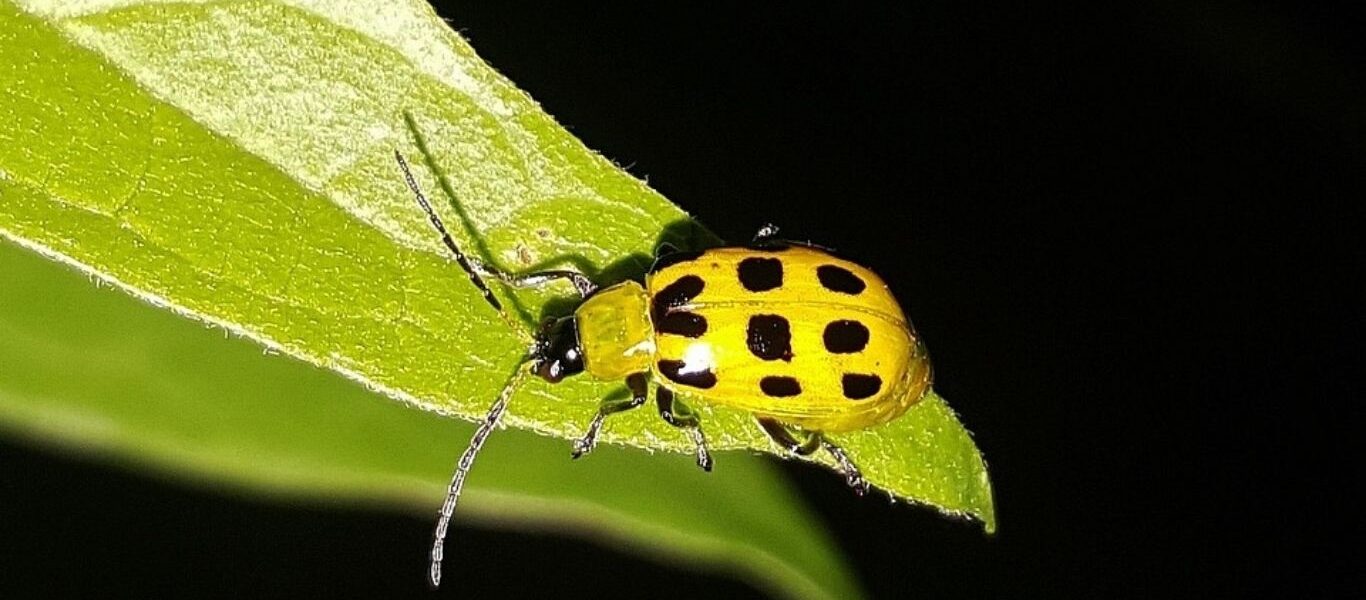

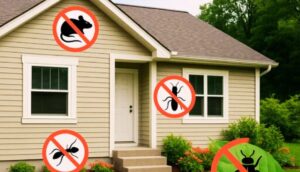

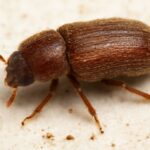
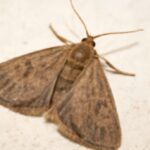
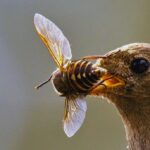
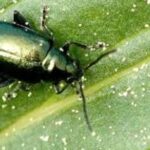
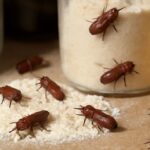
Thanks for this article on saving squash plants from cucumber beetles! These look like great solutions and I’ll be sure to plant plants that attract cucumber beetle predators and rotate what I’m planting every year. I also heard that cucumber beetles are attracted to the color yellow. Is that true? If so, do you also recommend I set out some sort of trap to attract them using colors?
Cucumber beetles can’t resist the color yellow, which is why gardeners often use yellow sticky traps to catch them. These traps are great for keeping an eye on beetle activity and cutting down their numbers, but they work best when paired with other methods like row covers or neem sprays. For the best results, place traps around the edges of your garden so you don’t accidentally invite more beetles to your plants.